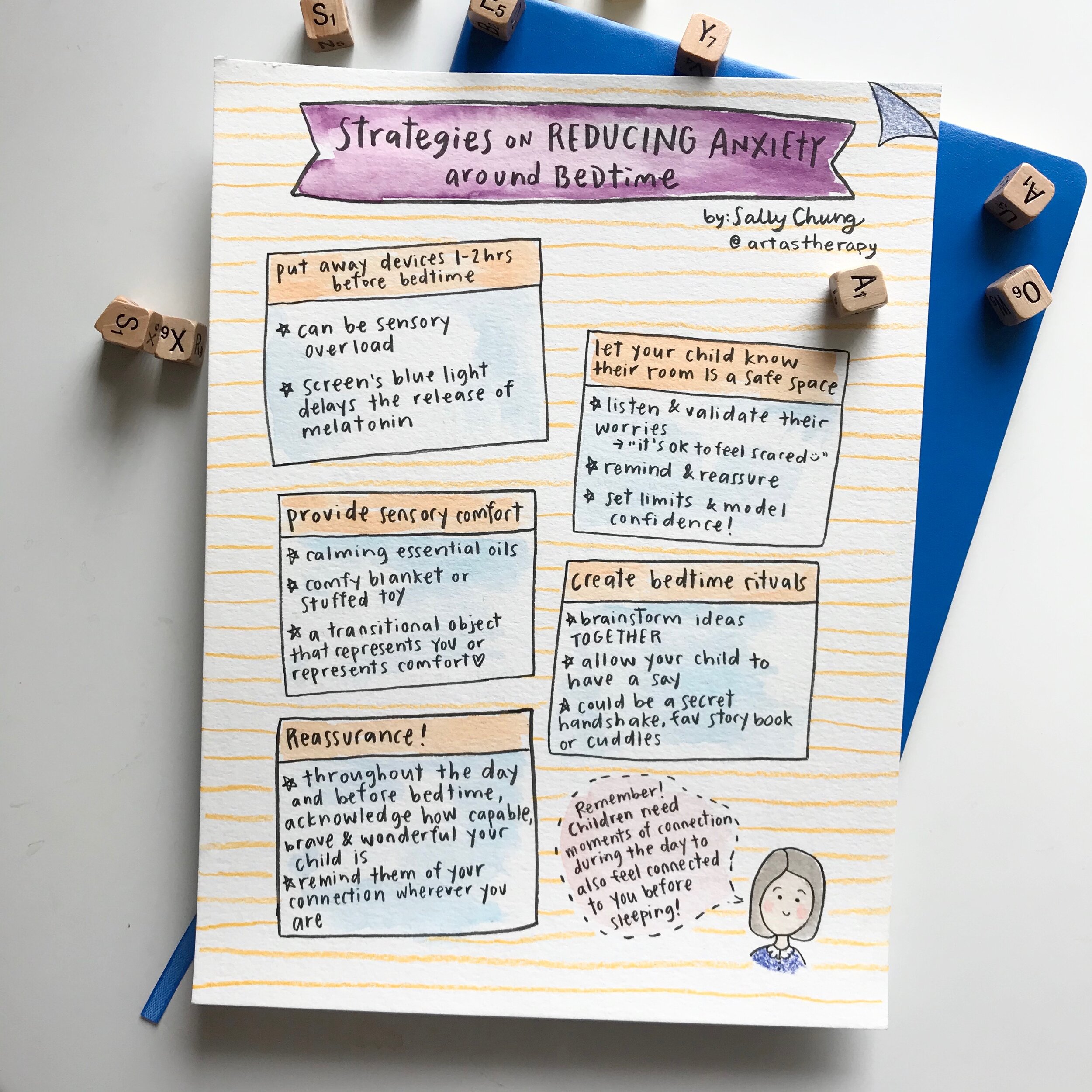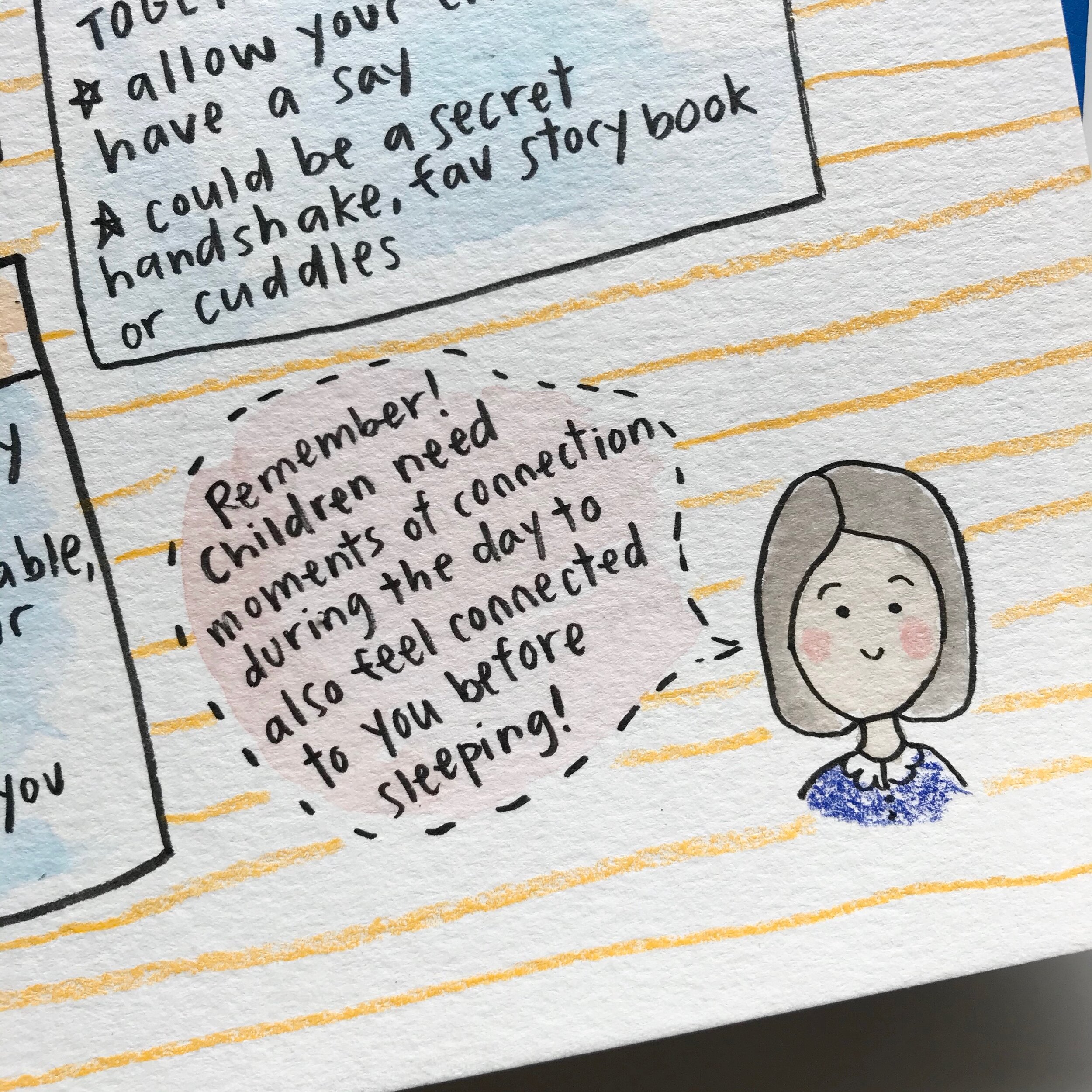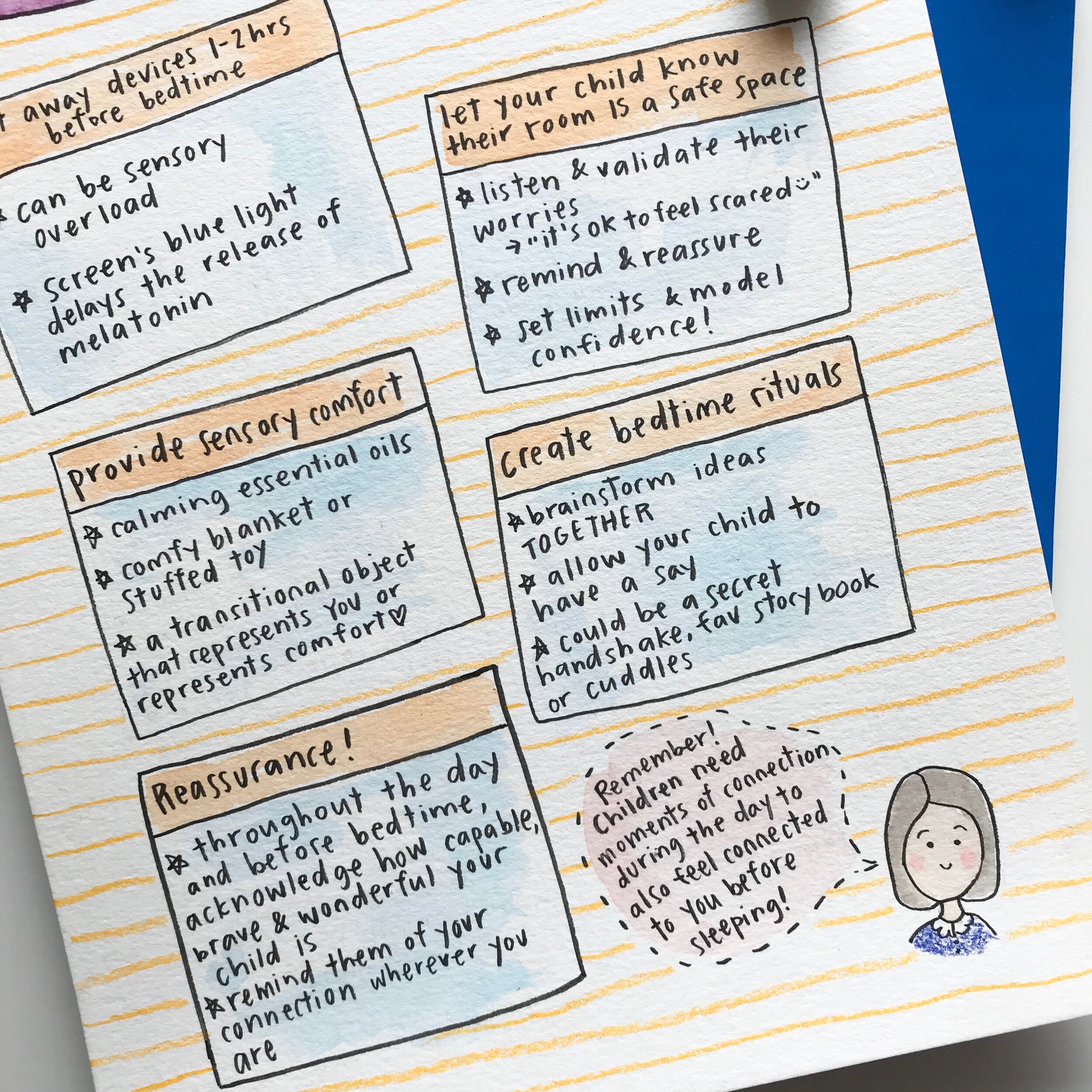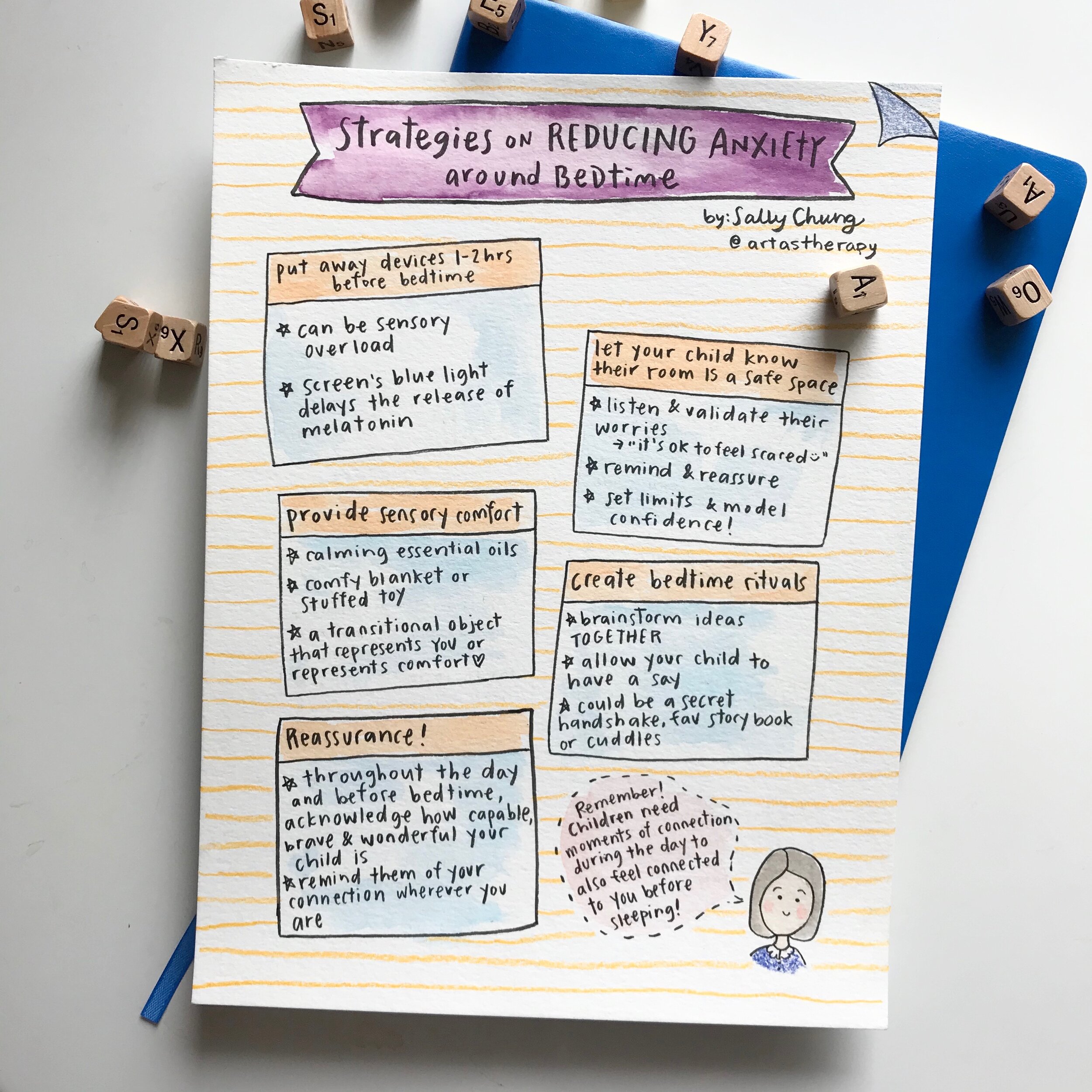When scary, unpredictable or big things are happening in children’s lives, they may experience some challenges sleeping in their own bedroom. We believe that parents and caregivers are the experts and can intuitively decide what their child’s sleeping arrangements look like. Here are some strategies for caregivers who are making changes in sleeping arrangements, finding their child no longer wants to sleep alone and or would like to transition their child to sleeping in a separate room.
1. Not being on a device for an hour or two before bedtime. Videogames and tv shows can have scary images or the sensory overload could be overwhelming for a child to sleep right after. The artificial blue light that’s emitted also delays the release of melatonin, making it more difficult to fall asleep. Instead, this can be a time for family activities like playing board games, bath or a relaxing activity such as colouring, reading or puzzles.
2. Let your child know that their bedroom is a safe place. You can first listen to what their fears are and validate them that we all feel scared at times. You can then reassure your child that it is a safe place even if you are not in the room with them. If they get out of bed to come to you in the middle of the night, try bringing them back to their bed after validating and reassuring again. You could try setting a limit and say "just 5 minutes and I am going to bring you back to your room, you can do it!" Your gentle, kind and reassuring approach, will support them in learning that staying in their bed is safe.
Remember if they are visibly upset, over tired and inconsolable, their higher thinking ability may be offline, so at this point keeping them in your bed might be the only way to calm down their nervous system and help them feel safe. If this is the case and you feel intuitively that physical proximity is the immediate need for your child, meet that need and you can try again the following night.
3. Sensory comfort. This may be using essential oils, a comfy blanket, sleeping with a stuffed animal or a pet. Sometimes using a transitional object may be helpful. A transitional object might be an item that represents you or represents comfort/safety.
4. Bedtime ritual. Having a bedtime ritual when in bed might be helpful. It might be talking about the day, reading a book, etc. You can brainstorm together what the activities can be with your child so they can have a say and feel in control before sleeping.
5. Reassurance. Some children require that extra comfort. Ultimately they need to feel comforted, reassured and safe in their own room. Leading up to bed time, try to acknowledge how wonderful, capable and brave your child is and that you are right in their heart even if you're physically in the next room. Reminding them that there’s an invisible string connecting them to you no matter how far you are, or that they have enormous power in their heart that will help them wherever they are can be comforting. Oftentimes children can pick up on your own anxiety or frustration so it’s important that you are gentle yet model confidence. It’s possible!
6. Connection. Our nervous system craves predictability in order to feel safe and regulated. During times of stress or uncertainty, a child may exhibit behaviors that indicate that their nervous system is not feeling safe. These behaviors may manifest in mysterious ways and will require some deciphering. You may see increased disruptive behaviour, silliness, more fighting with siblings, refusing to do certain tasks, easily upset, lots of tears, and or changes in sleep and eating habits. Taking a playful and curious approach to such behaviors provides an opportunity to the parent or caregiver, to understand why this behavior is taking place.
Suggesting a moment to reset, slowing down and paying attention to what is happening might reduce the disruption. Remember, behavior always means something! One of the ways to manage this is by increasing connectedness both during the day as well as before bedtime. Connectedness can be as simple as cuddling on the sofa, going for a walk, reading a book, colouring together, doing a household task together, or having a chat while providing sensory comfort. This may sound impossible, especially if you're working from home while looking after the home and other children, pets, older parents…., however keeping in mind that connecting time does not have to be long, might make it feel less overwhelming. Even short moments of connection throughout the day can be deeply beneficial and support the child’s nervous system to regulate.
We hope you find these suggestions useful and if you have any ideas for us or would like to learn more about how we can support you or your family, please feel free to connect with us via admin@artastherapy.ca or call 519 307 9000. We provide in person and online support. Also remember to follow us on instagram, facebook and twitter. We regularly share resources and art making ideas!






